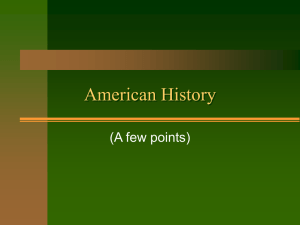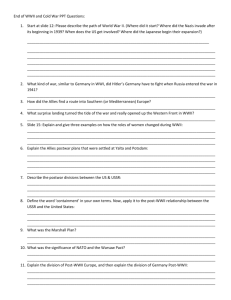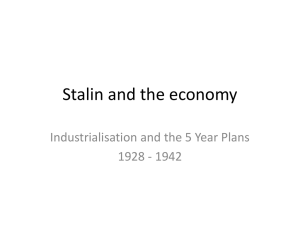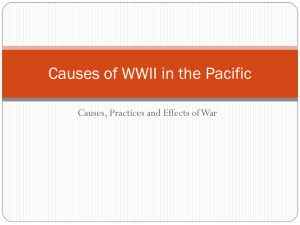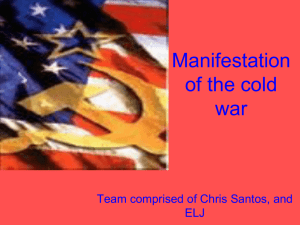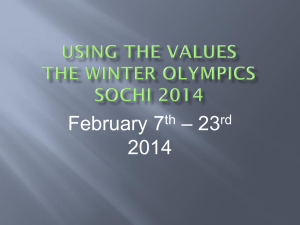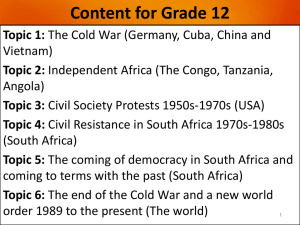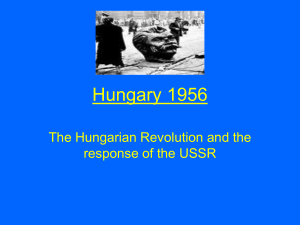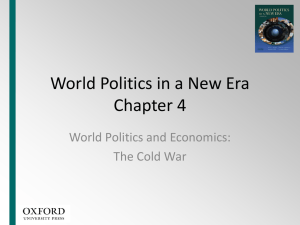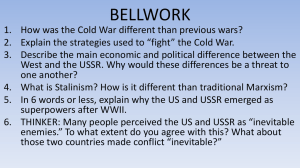The Cold War Powerpoint
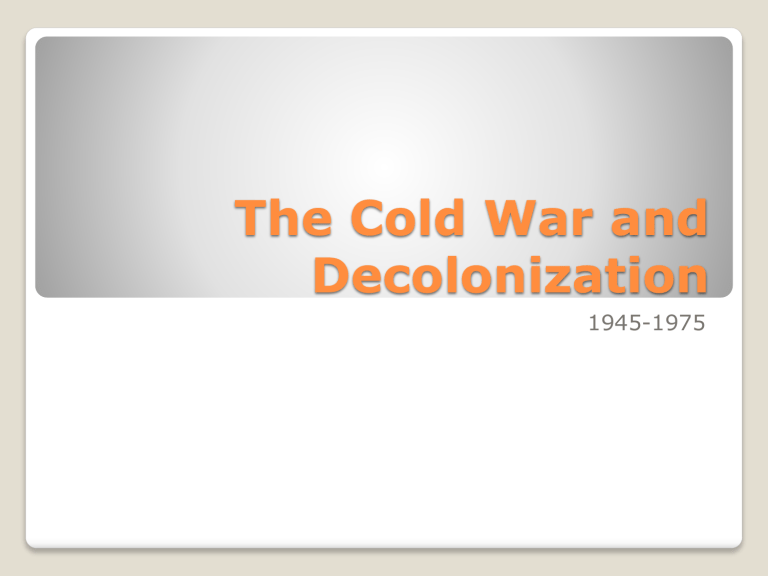
The Cold War and
Decolonization
1945-1975
The West perceived the USSR as a center of revolution capable of spreading their communist disease
◦ As a result, formed NATO: North Atlantic Treaty
Organization
The USSR was suffering from severe
WWII losses and felt threatened by
NATO—surrounded by enemies
Distrust and suspicion played itself out on a worldwide stage
The United Nations was the diplomatic stage
Two Superpowers
General Assembly: representatives of all member nations
Security Council: five permanent members:
China, France, Great Britain, the United States, and the Soviet Union plus 7 rotating members
Security Council members have veto power on any vote
UN Charter: renounced war and territorial conquest
Decolonization of Africa increase Gen. Assembly size-over time more concerned with the problems of the majority (poverty, racism, etc.) but the Security Council dominated other issues
Resolutions used to mean something (Israel, the moon.)
United Nations
West: supply and demand determined prices
USSR: government set all prices
Newly independent countries preferred USSR method of planned economy
West: economies damaged by war (except
US by comparison)
Marshall Plan provided $12.5 billion in aid to friendly European countries, revamped
Western economies
Europe moved a little left—formed the
European Community (EC)
USSR prospered quickly then declined severely
Capitalism vs. Communism
Western leaders saw the rapid spread of
Communism in the east as a threat; Poland,
Czechoslovakia, Hungary, Bulgaria, Romania, etc.
Truman Doctrine: offered military aid to
Greece and Turkey to resist USSR
Warsaw Pact: USSR response to NATO
It looked like alliances all over again
Several wars were fought during the “Cold
War” that did not directly involve USSR and
United States—they fought each other in proxy wars: Korea, Vietnam, Afghanistan
Proxy Wars
Communist North Korea invaded South
Korea; UN condemned it; United States allied with South Korea, China with North
◦ The US did not attack China for fear of involving the USSR
◦ A truce along the 38 th parallel was reached; it is a Cold War hotspot still today
◦ Ended in 1953
Korea
After France’s colonial enterprise ended in 1954,
Ho Chi Min’s Viet Minh government took over in the north, and a noncommunist government ruled the south
JFK decided the US should support the south, even though that government was corrupt
They were concerned there would be a domino effect if South Korea fell to the communists
The Vietnam War ended in 1973 with a treaty saying the US would leave with promises of elections
The North Vietnamese broke treaty and invaded the south; the US was experiencing strong antiwar sentiments and civil rights movements
Vietnam
Based on fear that someone would use nuclear weapons
Cuban Missile Crisis: USSR placed missiles in
Cuba that could reach the US; the US freaked out and prepared to invade; Khruschev pulled the missiles out
This gave reason for hope: superpower leaders were willing to give up rather than fight
The US and USSR continued to build up nuclear weapon capabilities—the rest of the world slowed down and watched in horror
Space satellites were launched—space race to see who could dominate elsewhere
The Arms Race
Newly independent states had to function in a bipolar world of superpowers
Their goals were quite different
Third World referred to non-aligned nations—not Communist, but not industrialized
Some were skillful and played the USSR and US for weapons or for money
Now we call them “developing” countries because they are not industrialized
The Third World
Benefited from the Cold War
Remained on the sidelines, sometimes providing (selling) arms
New constitution (under US supervision) had small army
Turned attention to building industry and engaging in world commerce
Peace treaties with SW Asian countries expanded economy there
Three industries that put Japan on the economic map: Electricity, steel, and shipbuilding projects
Japan
Under Mao Zedong, The People’s Republic
Focused on the peasantry
Mao’s Great Leap Forward of 1958 was supposed to make China a world power by industrializing on the local level
It failed, but demonstrated the independent nature of Mao Zedong in the face of the big
USSR neighbor
Reforms led to 30 million deaths
1966 Cultural Revolution: to kindle revolutionary attitude in the youth—again a lot of death and divisiveness
Nixon visited in 1972—a stab at USSR but opened the relationship with China
